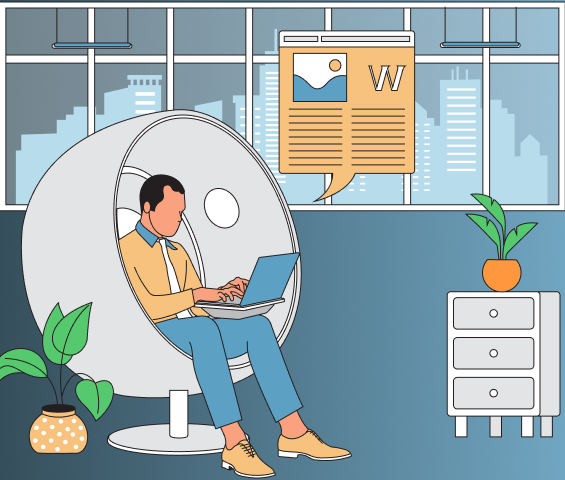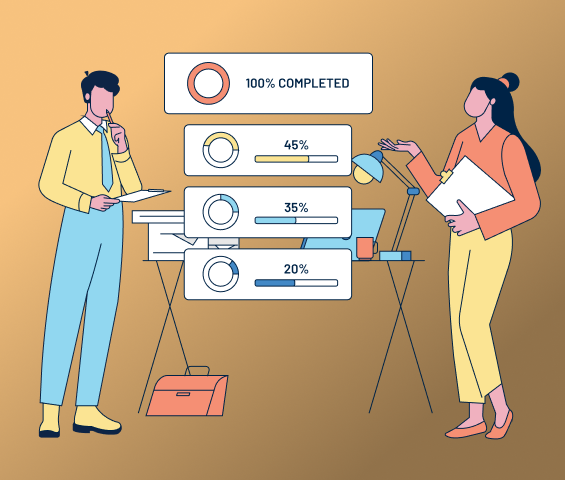what can a cover letter explain that a resume cannot?
In today's fiercely competitive job market, submitting a polished resume is just the starting point. Use our Resume Builder to create a standout resume tailored to your needs. While a resume highlights your qualifications and work history, it often falls short of conveying your unique story and personality.
So, what can a cover letter explain that a resume cannot? A cover letter allows you to:
Express Your Enthusiasm: Show genuine interest in the role and company.
Tell Your Story: Provide context to your career path and experiences.
Showcase Soft Skills: Highlight communication skills and cultural fit.
Address Specifics: Tackle any gaps or transitions in your employment history.
In this article, we'll explore how to leverage your cover letter to stand out from the crowd and make a lasting impression.
1. Personalization and Connection
A cover letter offers a platform to create a personal connection with the employer—something a resume can't achieve on its own. Here's how:
1.1. Expressing Genuine Interest
Show Your Enthusiasm
A cover letter allows you to express genuine excitement about the position and the company. You can mention specific projects, company values, or recent news that resonate with you.
Example:
"I was thrilled to see that your company values innovation and sustainability—principles I deeply share."
Demonstrate Company Knowledge
By referencing the company's mission or recent achievements, you show that you've done your homework. This not only highlights your interest but also your proactive nature.
Tip:
Research the company's website, social media, and recent news articles to find points you can mention.
1.2. Building a Personal Connection
Address the Hiring Manager by Name
Personalizing your cover letter by addressing it to the specific hiring manager adds a human touch. Not sure where to start? Explore our Cover Letter Builder for templates and tips.
Example:
"Dear Ms. Smith," instead of "To whom it may concern."
Tailor the Content to the Role
Customize your cover letter to align your skills and experiences with the job requirements. This shows that you're not sending out generic applications.
Strategies:
• Mention specific skills listed in the job description.
• Relate past experiences to the potential role.
2. Storytelling and Contextualization
A cover letter allows you to tell your story and provide context that doesn't fit into a resume.
2.1. Providing Context to Your Career Path
Explain Employment Gaps and Changes
You can address employment gaps, career transitions, or shifts in industry. Check out Resume Examples for inspiration on how to present these changes effectively.
Example:
"After taking a year to volunteer abroad, I developed a global perspective that I can bring to your international projects."
2.2. Highlighting Relevant Achievements
Dive Deeper into Accomplishments
Elaborate on specific achievements that are most relevant to the job.
Example:
"In my previous role, I led a team that increased sales by 30%, which I believe aligns with your company's growth objectives."
3. Showcasing Soft Skills and Personality
A cover letter gives you the chance to highlight your soft skills and let your personality shine—elements that are difficult to convey in a resume.
3.1. Demonstrating Communication Skills
Exhibit Your Writing Proficiency
Your cover letter serves as a sample of your written communication skills. It allows you to demonstrate your ability to articulate thoughts clearly and professionally.
Tips:
Use clear and concise language.
Avoid jargon and overly complex sentences.
Proofread carefully to eliminate grammatical errors.
3.2. Illustrating Cultural Fit
Align with Company Values
Express how your personal values and work style align with the company's culture.
Example:
"Your company's commitment to sustainable practices aligns with my passion for environmental conservation, as evidenced by my volunteer work with local eco-initiatives."
Showcase Your Personality
Let your personality come through to make a memorable impression.
Tips:
Maintain a professional yet warm tone.
Share brief anecdotes that reflect your character.
Be authentic to help the employer see you as a potential team member.
4. Addressing Specific Job Requirements
A cover letter enables you to directly tackle the specific needs outlined in the job description—something a resume can't fully accomplish.
4.1. Tailoring to the Job Description
Reference Specific Skills and Experiences
By explicitly mentioning how your skills align with the job requirements, you demonstrate that you're a perfect fit. Learn more with our Resume Examples and tailor your resume to stand out.
Example:
"Your search for a bilingual customer service representative caught my eye, as I am fluent in both English and Spanish with over three years of experience in customer support."
Show Understanding of the Role
Discuss how you can contribute to the company's goals based on the job specifics.
Tips:
Mirror keywords from the job posting.
Provide brief examples of past experiences related to the role.
4.2. Overcoming Potential Objections
Address Gaps or Shortcomings
If you lack certain qualifications, use the cover letter to explain how other strengths compensate.
Example:
"While I may not have direct experience in digital marketing, my background in content creation has given me a strong foundation in engaging audiences online."
Express Willingness to Learn
Emphasize your eagerness to grow and adapt.
Example:
"I am excited about the opportunity to develop new skills in this area and am confident in my ability to quickly learn and apply new concepts."
5. Adding a Human Touch
A cover letter allows you to add a personal dimension to your application, making you more than just a list of qualifications.
5.1. Sharing Motivation and Goals
Express Long-Term Career Aspirations
Share your professional goals and how they align with the company's future.
Example:
"I am excited about the prospect of growing with your company and contributing to innovative projects that shape the industry's future."
Demonstrate Ambition and Drive
Highlight your passion for the field and your eagerness to make a meaningful impact.
Tips:
Mention specific aspects of the industry that excite you.
Explain how the role fits into your career trajectory.
5.2. Expressing Gratitude and Professionalism
Thank the Hiring Manager
Conclude your cover letter by expressing appreciation for their time.
Example:
"Thank you for considering my application. I look forward to the possibility of contributing to your team's success."
Leave a Positive Lasting Impression
Politeness and professionalism can set you apart from other candidates.
Tips:
Use a courteous closing, such as "Sincerely" or "Warm regards."
Ensure your contact information is clear for follow-up.
Conclusion
A cover letter offers invaluable opportunities that a resume simply cannot provide. It allows you to:
Personalize Your Application: Make a direct connection with the employer.
Tell Your Story: Provide context and explain your career journey.
Showcase Soft Skills and Personality: Highlight qualities that make you a great fit.
Address Specific Needs: Tailor your message to the job requirements.
Add a Human Touch: Share your motivations and express gratitude.
By investing time in crafting a thoughtful cover letter, you enhance your chances of standing out and securing that all-important interview. Take the next step with our Cover Letter Builder and create a cover letter that leaves a lasting impression. Remember, while your resume lists your qualifications, your cover letter tells the story of who you are and why you're the perfect fit for the role.
Related Articles
4 min read
Jan 26, 2025

How Many Bullet Points Per Job on Resume? The Complete 2025 Guide
Aim for 4-6 bullet points per job on your resume, but adjust strategically for your role and industry to maximize impact and ensure ATS compliance.

